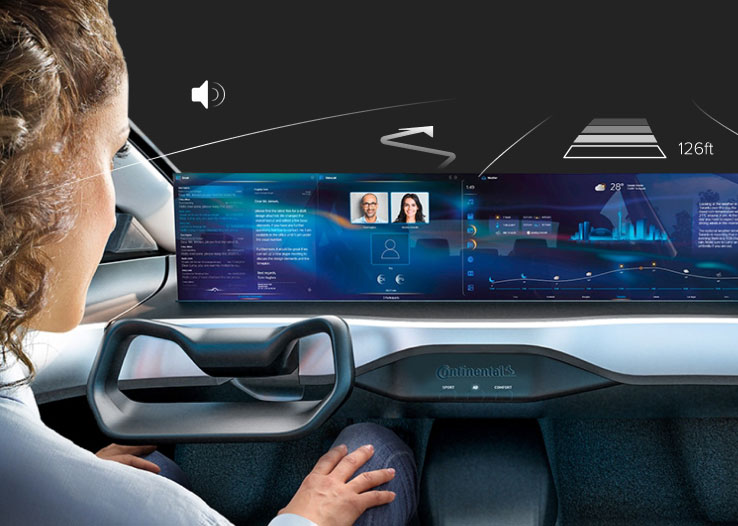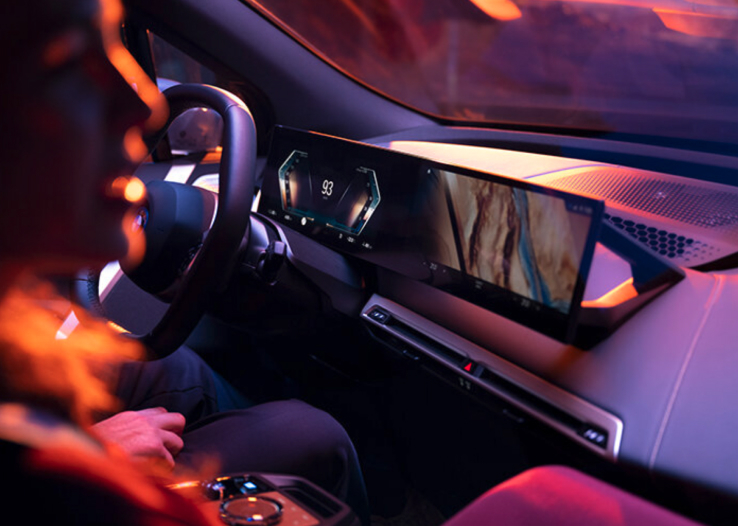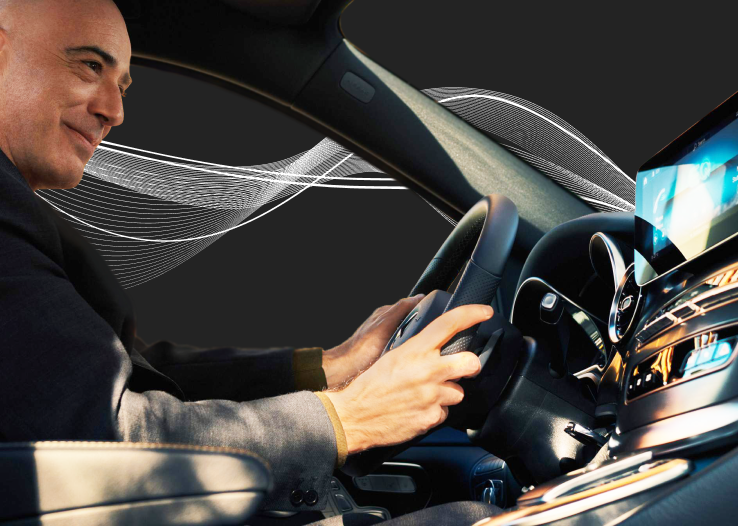BMW. Mercedes. Porsche. The renowned Beetle. When you think of great cars, you think of Germany. The German auto industry has long been a symbol of national pride and global engineering excellence — it makes up for about 6% of Germany’s total GDP in fact. Brands like those just mentioned have led the global premium car market for decades.
But today, that industry stands at a fork in the road. Converging forces — from economic tariffs to changing consumer behaviors and global tech competition — are creating strategic uncertainty.
8 ways to get ahead in the German auto industry
To stay relevant and profitable, German automakers and OEMS looking to succeed in Germany need to overcome these challenges and rethink their fundamental business models. Here’s how you can overcome the uncertainty and position yourself for long-term success.
1. Acknowledge the shifting market
The German EV market took a major hit in 2023 when the government abruptly ended the Umweltbonus — a key subsidy program supporting EV purchases. This sudden policy change dented consumer confidence and reduced affordability, especially for mid-market buyers. Combined with inflation and the rising cost of living, German OEMs are increasingly struggling to compete with cheaper, tech-loaded Chinese brands like BYD.
Compounding this are high domestic energy and labor costs. Despite improvements in energy pricing, Germany remains among the most expensive places to manufacture cars. Now nearly 40% of German industrial firms are considering relocating operations abroad. The once rock-solid foundation of German industrial competitiveness is now under pressure.
2. Rethink the premium-only mindset
Yes most brands in the German auto industry are on the higher end of the premium and price scale. And now many German automakers have responded by leaning harder into this luxury segment, aiming to protect profit margins rather than volume.
Volkswagen is pushing luxury EVs like the Audi A6 e-tron and Porsche Cayenne EV, while Mercedes is doubling down on its “value over volume” mantra.
But this strategy has risks.
It opens the door for cheaper rivals like Kia and Hyundai, who are winning over younger, price-sensitive buyers with longer warranties and feature-rich, affordable EVs. It also leaves German brands vulnerable to a generational shift: younger urban consumers are increasingly skeptical of ownership and are prioritizing flexible access, digital convenience and value over brand equity.
3. Level the tech playing field
The gap between premium and mid-market is closing, especially where EVs are concerned. And fast. Mid-range models now offer similar range, over-the-air (OTA) updates and connected features that were previously reserved exclusively for luxury tiers. That makes it harder for German brands to justify high price points unless their software and user experiences are clearly superior.
Yet this is precisely where German OEMs have struggled. Audi’s e-tron GT and Mercedes’ EQS were both praised for hardware but criticized for clunky software and lower-than-expected range. And VW faced reputational damage with a major software recall in 2024, plus data security issues affecting hundreds of thousands of EV owners.
Software needs to be a core competency, not a bolted-on afterthought, if you want to see results. Success in the German auto industry means delivering seamless, intuitive digital experiences from day one — and continuously improving them through updates.
4. Invest in infrastructure and mobility access
One of the main takeaways from our recent global automotive industry outlook is Germany’s rapidly increasing EV adoption — over 100,000 EVs were registered by early 2025. Which is great on paper but infrastructure isn’t keeping pace. With about 1.65 million EVs and just over 150,000 public charging points, the EV-to-charger ratio is lagging behind where it needs to be.
More troubling for the industry is the uneven distribution. Rural regions lack sufficient coverage, while cities face congestion at existing stations. 70-80% of all charging in Germany takes place in workplace or business-owned (like a car dealership) settings, which highlights the dominance of private charging infrastructure over public charging points.
Without addressing this, “charging anxiety” will remain a barrier for consumers, particularly for those without private chargers.
This has led to the rise of mobility alternatives like car-sharing and subscription models. Automakers like Stellantis (with Free2Move) and others are investing in this trend, recognizing that access — not ownership — is the new paradigm, especially among younger drivers.
Take urban mobility seriously. As an OEM, offer flexible, digital-first services while monitoring the risk of harming traditional sales.
5. Embrace direct sales and user experience
The agency sales model, where manufacturers sell directly to consumers, is gaining momentum. Mercedes-Benz and Volkswagen have adopted this approach in Europe, providing fixed pricing, online configurators and better control over customer experience.
This shift gives German OEMs a critical advantage: a direct, ongoing relationship with buyers. Doing so allows you to offer personalized features, OTA upgrades and loyalty-driven bonuses. It also aligns with what younger consumers expect — a frictionless buying experience akin to purchasing a smartphone.
More importantly, UX now plays a central role in brand perception. A 2024 McKinsey study found 85% of users preferred Apple CarPlay/Android Auto over in-house systems, highlighting the need for German OEMs to either integrate or drastically improve their native software.
The goal is clear. UX needs to be as polished and user-friendly as the physical product. Global brands like Tesla and Chinese rivals are already setting this standard. Speaking of which...
6. Prepare for the China challenge
Competing with China is becoming increasingly prevalent for every OEM, not just German. Chinese brands like BYD are no longer seen as low-end imitators. Consumers increasingly view them as innovative, tech-forward and competitively priced. Just look at NIO’s pioneering in-car companion, which set the standard for what in-car AI can be.
With local production and tech integration, Chinese brands are quickly becoming a real threat to the German auto industry (as well as others!).
German OEMs won’t win here by competing on cost. But they can compete by really doubling down on their reputation for engineering excellence, safety and brand heritage. Mercedes’ leadership in Level 3 autonomy and BMW’s OTA-enabled feature upgrades are examples of how to stay ahead — if such innovations are deployed consistently across model lines.
7. Regionalize supply chains
The old global supply chain model — reliant on China and just-in-time logistics — is giving way to regional resilience. German OEMs are investing in European battery production and supply chain autonomy through gigafactories and EU alliances.
At the same time, they’re centralizing software and platform development. Volkswagen’s unified SSP platform and VW.os operating system will underpin everything from economy to luxury models, cutting development time while enabling feature-rich modularity.
This dual strategy of global tech standardization with regional manufacturing is how German brands can future-proof their operations against geopolitical shocks, tariffs and fragmented markets.
8. Anticipate industry consolidation
With electrification being capital-intensive and competitive pressures rising, not all German OEMs or suppliers will survive independently. Consolidation is likely — both among traditional brands and tech suppliers. Deep alliances, platform-sharing agreements or even mergers will likely define the next phase of the industry.
This also creates an opportunity. German firms can lead in creating next-generation, joint ventures that combine premium expertise with software excellence.
Getting ahead in the German auto industry
German automakers (and other automakers looking to succeed in Germany) aren’t doomed — far from it! But the era of coasting on legacy prestige is over. To overcome strategic uncertainty, you need to focus on:
- Re-centering the business around user experience and digital integration
- Rebuilding competitiveness through smarter cost structures and regional supply chains
- Redefining ownership with flexible, urban-friendly mobility models
- Restoring trust by delivering world-class software, safety, and service
In the digital automotive age we’re in, craftsmanship isn’t just metal and mechanics — it’s code, UX and connectivity. German brands still have design language, engineering depth and global recognition. If they can pair these with bold, tech-savvy execution, the German auto industry can lead once again — not just in hardware but in the full-stack future of mobility.
The insights in this article are based on our global industry outlook report, a briefing from industry experts across China, Japan, Germany, and the United States, on how to use local knowledge to succeed globally. Read it now for more actionable insights that set you up for long-term growth.







